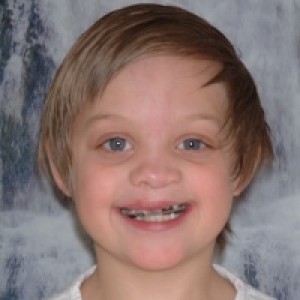 We have treated many children with hare lips and cleft gum. Here below, there is some information about orthodontics for children and at the bottom of the page there is a link to the website of the Association of children with hare lips and cleft palates. Wide smiles!
We have treated many children with hare lips and cleft gum. Here below, there is some information about orthodontics for children and at the bottom of the page there is a link to the website of the Association of children with hare lips and cleft palates. Wide smiles!
Orthodontics for children with hare lips and cleft palates
Parents with children who have cleft palate or cleft gum or hare lip soon realise that they will need treatment from a large number of professionals throughout their period of growing up. Orthodontic specialists are dentists with a specialist education in the treatment of tooth and bite malocclusions and they perform an important role in dentistry.
A cleft gum or palate normally involves tooth or bite malocclusions which are a direct result of a hereditary defect. Examples of such malocclusions are the underbite which is a result of insufficient forward growth of the upper jaw while crossbite is caused by the molar area collapsing towards the cleft, resulting in a narrowing of the upper gum. There is also often disruption of the growth of tooth buds nearest to the cleft, causing the development of too many or too few teeth, defective teeth, twisted or misplaced teeth.
Children born with a cleft palate, cleft gum or hare lip thus have a great need for orthodontic treatment. Treatment and monitoring usually begins at a very early age and is not completed until change and growth of teeth is completed. It is common that treatment will be as is briefly described here below.
Orthodontics during the period of change between deciduous and permanent teeth.
Normally, work on remedying malocclusions begins at 7 to 8 years of age, but it is preferable to bring the child to be examined by an orthodontic specialist, for example between the ages of 4 to 6. Though deciduous teeth may seem to be very misplaced at this age and not be of much use, one must certainly not neglect their care. One should start brushing immediately the teeth emerge and keep this first set of teeth as undamaged as possible with good treatment of the teeth and by moderate sugar consumption. Regular visits to the family dentist are necessary from 2 to 3 years of age.
When a child is 6 to 8 years of age, the first permanent teeth appear. They are normally twisted or in the wrong position and it is necessary to guide them to the correct position in the dental arch as soon as they emerge. This is achieved variously by the use of gum plates or fixed, glued dental appliances, rods. Work is also commenced on expanding the sides of the dental arch, thus correcting crossbite. This increases the cleft, but the purpose is to set the dental arch in as normal a position as possible.. When this stage has been achieved, it is normally the appropriate time for a plastic surgeon to graft bone into the cleft in order to close it and also to provide a better environment for the teeth that have yet to emerge. At the end of this first stage the front teeth should be in a reasonable position and a bone bridge will have been created between the two halves of the gum. Dental appliances in use at this stage are often removed and treatment not resumed until more adult teeth have emerged.
Orthodontics on completion of tooth change
Where there has been an interval in orthodontic treatment after the first phase, a new period of treatment normally begins at 12 to 14 years of age when all the adult teeth have emerged. This orthodontic treatment is made with fixed appliances where the objective is to fully adjust the teeth and the bite. When the orthodontic treatment is completed one often has to make crowns to repair defective teeth or to make bridges where teeth are lacking.
It should be noted that where there is a major discrepancy between the forward growth of the upper and lower jaw then their alignment may need to be changed with surgery. Such adjustments to jaws are made by plastic surgeons and oral surgeons and are not made before the teenager has stopped growing, that is at 15 to 16 for girls and 17 to 18 for boys. In the case of such jaw operations, it will still be necessary to apply braces to all the teeth, even where this has been done twice before.
Cooperation
As has been explained here, the duration of orthodontic treatment can unfortunately be very long. For this reason it is important that parents be patient and work conscientiously towards defined goals, and where good cooperation is achieved results can often be striking. The role of the parents and children in this cooperative process is among other things, to use non-fixed appliances, such as elastic and braces according to instructions from the dentist, to take good care of teeth and to prevent damage to braces from careless eating.
In this short article I have tried to explain how orthodontics are generally beneficial. Each child is however an individual and in some way different from all others. Parents are therefore encouraged to ask additional questions in order to find out what measures are appropriate in each instance.
